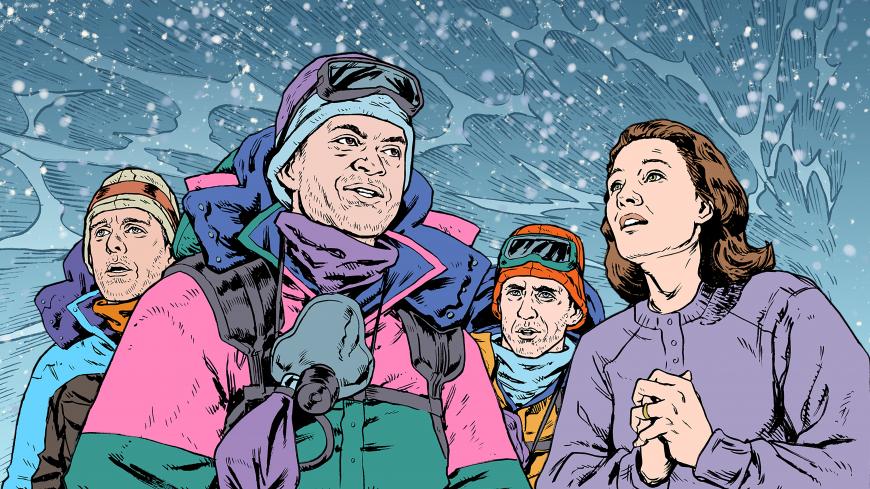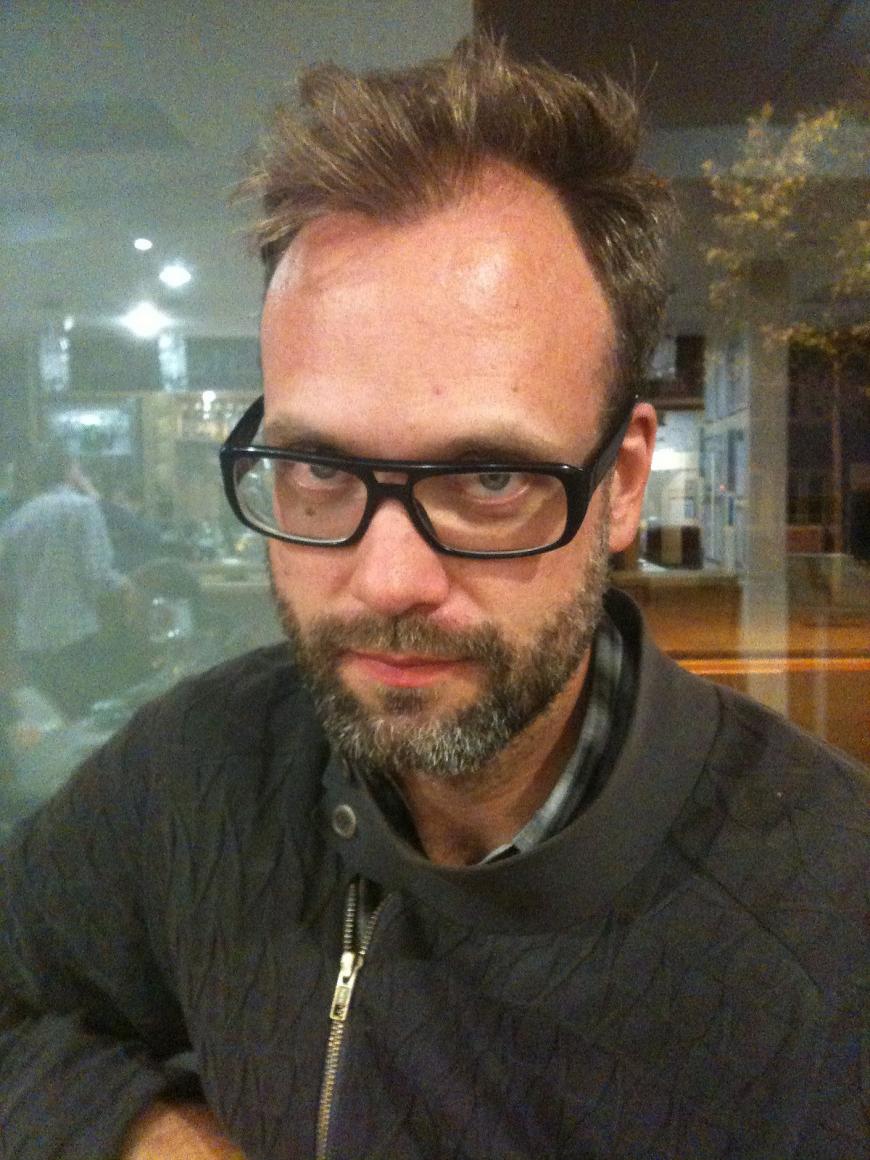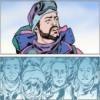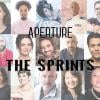
Opera Parallèle spent the pandemic preparing a longtime dream of Creative Director Brian Staufenbiel: a merging of opera and graphic novel through the medium of film. The results were unveiled on June 16 with the premiere of the film of Everest, by librettist Gene Scheer and composer Joby Talbot, and will remain on view on Dallas Opera’s website, which is the producing partner for the project. The results are compelling, mainly because the balance of epic, human-against-nature themes and close-up, personal storytelling is strangely natural in this newly invented format. It’s opera as you might imagine it, if it were freed from the physical constraints of live performance, and yet it foregrounds live performance in a filmic way.
It helps that Staufenbiel chose a perfect opera to set in this manner. Everest received its live performance premiere at Dallas Opera in 2015, where it was conducted by Nicole Paiement, who is also OP’s general and artistic director. The subject is the disastrous end of a climb to the top of Mount Everest in 1996: delayed by too many parties trying to reach the summit, climbers started their descent too late and were further beset by a blizzard. Eight people died, including two of the opera’s protagonists, postal carrier Doug Hansen and professional guide Rob Hall.

Despite three books and a documentary and hours of his own interviews with survivors, Scheer has written a libretto that heeds Verdi’s famous dictum, “Poche parole!!” (few words). Although Scheer would not have known it in 2015, the libretto’s setup, including its bare reciting of times as the tragedy begins to unfold, is similar, in an uncanny way, to storytelling techniques in a graphic novel, where words are also kept to a minimum. The basic themes of the show are set out concisely at the beginning, and the movie version is a trim 66 minutes.
Talbot, who has scored major movies in addition to his thriving concert hall career, draws from both these experiences. The opera begins with sound design — winds, radio chatter, metallic percussion in addition to a musical motive. For the graphic novel version, the orchestral score was recreated digitally in Talbot’s home studio by soundtrack engineer Magnus Green. Paiement was involved, setting tempos and suggesting changes and improvements to the digitized sounds (many of which were recorded from real instruments.)
Talbot’s score surrounds the singers’ basically tonal vocal melodies with pentatonic and whole tone-derived motives, along with the sound design elements and percussion, building up a satisfyingly full musical texture and expertly tracking the characters’ personal experiences against the natural forces in play.
Staufenbiel and his lead artist Mark Simmons and Director of Photography David Murakami worked similarly, setting out a stark, blue-tinted world that includes the presence of the ghosts of dead climbers. Staufenbiel diligently maintains the framing used in graphic novels, even marking the passage through the story with page turns.
Meanwhile, the singers, after recording their tracks, were filmed again singing the roles with motion capture discs on their faces. In the film, the expressions and facial movements thus recorded are transferred into the illustrated environment as mo-cap animation. The result may strike some as akin to a comic Instagram filter, but done on a much higher level. To me, it seemed in keeping with the stylized environment, and at the same time, it helped push the singers’ faces to the forefront in a way that we very much want to see in opera. You get the singers’ emotions up close but without ever being removed from the setting.
The singers are uniformly excellent, despite being able to act only with their faces. Hadleigh Adams conveys Doug Hansen’s difficulty breathing almost from the beginning (always an interesting challenge for a singing actor). Nathan Granner makes Rob Hall’s heroism in choosing not to abandon Hansen a series of active, moment-to-moment choices and, despite the inherent limitations, gives us the character’s robust physicality. Sasha Cooke, as Hall’s wife, Jan Arnold, is her usual warm self, but Arnold’s personal knowledge of mountain climbing comes through as she realizes, without anyone telling her, that no one can be “all right” so late in the evening at the top of Everest. Cooke gives these lines the perfect weight, and it carries through her subsequent radio call with her husband, their last. Kevin Burdette is excellent as Beck Weathers, who musters the energy to save himself through a vision of his young daughter. The supporting cast/chorus, doubled via multi-tracking, is uniformly strong.
Everest is available for streaming through January 16, 2022, at a cost of $19.99 on the Dallas Opera TV site.
At the premiere, Opera Parallèle announced that Ruth Nott had been confirmed as the company’s new managing director. She is the former education director at San Francisco Opera and has been consulting with major companies since 2019.




